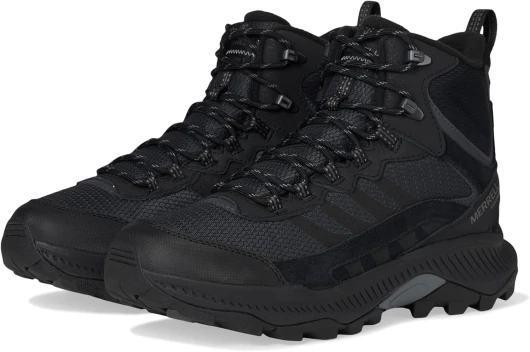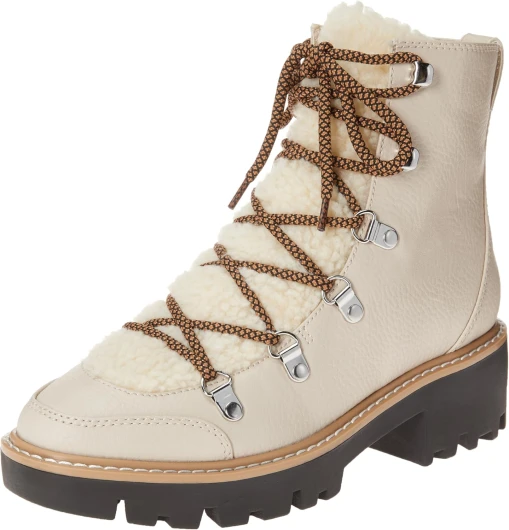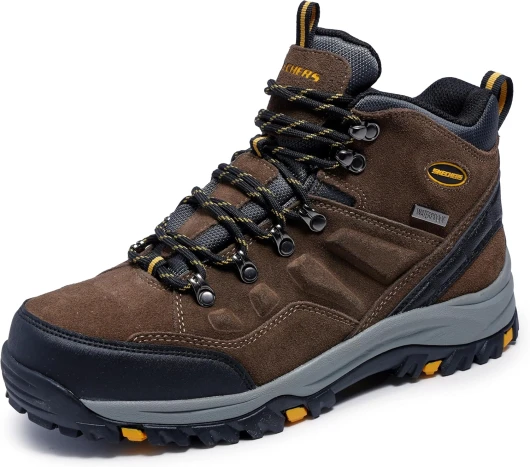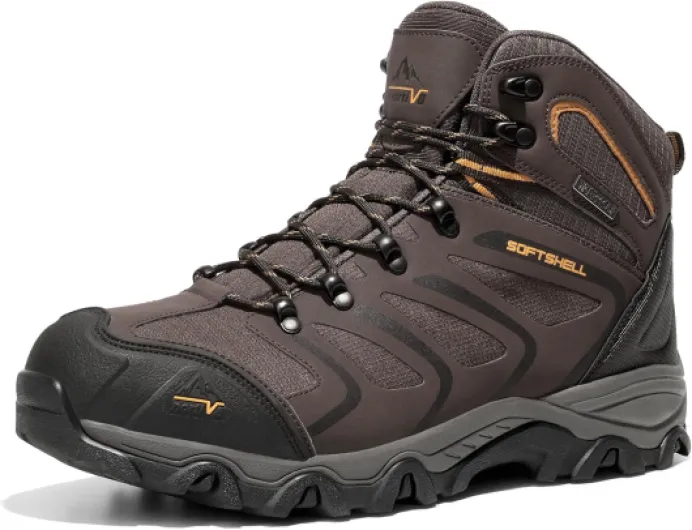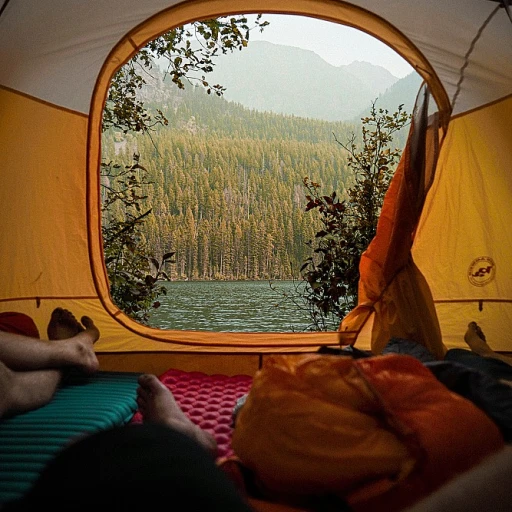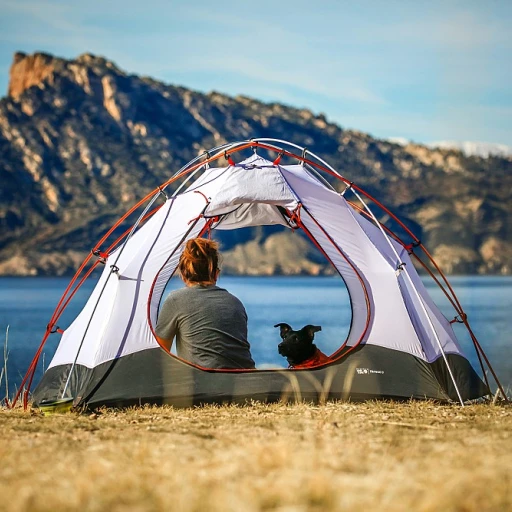
Understanding Winter Mountaineering Needs
Winter Challenges for Adventurers
Embarking on a winter mountaineering adventure requires a thorough understanding of the unique challenges presented by this season. High peaks and alpine conditions introduce an array of hurdles, from ice-covered trails to unpredictable weather patterns. Winter skills such as avalanche awareness and using ice axes can be vital in these snow-draped mountains. Navigating through icy terrains demands solid preparation and the right gear to support your mountaineering skills. Of course, this includes investing in good, durable hiking boots designed to withstand the harshest winter conditions. Quality winter climbing boots are integral for any successful ascent, providing not only warmth but also stability in the face of rapidly changing weather. Winter walking and climbing aren't just about the gear—it's essential to have a comprehensive understanding of the environment you're entering. Mountaineering courses often cover critical aspects such as winter skills and safety strategies. Days spent in a skills course, mastering the use of crampons and the correct handling of an ice axe, for example, will equip you to tackle the snow and ice effectively. For those new to winter adventures, a national park guide or a mountain guide can be an invaluable resource. These professionals are seasoned in navigating winter conditions and can offer insights into mountaineer routes and safety measures that you may not be aware of. Embrace the opportunity to enhance your winter skills under the guidance of experienced professionals. To make your journey even more successful, consider exploring the top work boots for wide feet to ensure maximum comfort and stability on long winter days in the mountains. Every step prepared with knowledge and suited gear brings you closer to conquering the frosty peaks.Key Features of Hiking Boots for Cold Weather
Essential Features to Brave the Elements
When tackling the frosty challenges of winter climbing, especially in alpine regions, selecting the right pair of hiking boots becomes crucial. In these chilled environments, the boots you choose are your first line of defense against harsh mountain conditions.
Here are the key features that separate a winter-ready mountaineering boot from the rest:
- Insulation: To ensure your feet remain warm during extended periods in the snow and ice, choose boots that provide substantial insulation. A well-insulated boot minimizes heat loss and helps in preventing frostbite. Look for materials like Thinsulate or Gore-Tex, known for their thermal efficiency.
- Waterproofing: The unpredictable weather in national parks and snowy mountains means encountering wet conditions. Opt for boots with a robust waterproof membrane to keep your feet dry throughout the day of trekking.
- Durability and Support: The harsh terrain and ice climbing scenarios require a boot constructed from durable materials, capable of providing the necessary support. A high-cut design offers additional ankle security and support, which is vital during those challenging mountaineering routes.
- Crampon Compatibility: Winter mountaineering often calls for traversing icy paths. Boots compatible with crampons are essential for maintaining grip and stability on such surfaces. Ensure that the boots you opt for can securely accommodate crampons for those high peaks adventures.
- Sole and Traction: Good traction is essential when navigating slippery surfaces. Opt for boots with a sturdy sole designed for winter conditions to enhance grip on snow and ice, thus boosting your confidence as you progress through your mountaineer route.
These features, combined with individual material considerations, are what will shield you from the elements and ensure your safety and comfort during your winter climbing pursuits. Investing in the right boots allows you to focus on enhancing your mountaineering skills and enjoying the beauty of winter landscapes.
Material Matters: Choosing the Right Composition
Choosing Materials for Winter Mountaineering Boots
The challenging landscapes of winter mountaineering demand boots that are up to the task, and choosing the right composition is paramount for a successful venture into alpine environments. When embarking on icy peaks and snow-covered mountains, the choice of material will directly impact your experience on day-long expeditions in harsh weather conditions.
The right materials need to combine rugged durability with insulation and weatherproofing attributes. Most winter boots for mountaineering utilize a combination of leather and synthetic materials. Leather offers superior durability and a classic fit, while synthetic fabrics provide impressive waterproof features and are known for their lighter weight, a beneficial feature when tackling demanding mountaineer routes.
Within this context, pay attention to the built-in insulation options. Modern mountaineering boots often incorporate Thinsulate or PrimaLoft insulations, materials that promise warmth even when temperatures plummet on high peaks. Coupled with a waterproof membrane, such as Gore-Tex, these insulations will protect your feet from the wet and cold environment encountered during a winter climbing skills course.
Mountaineering boots equipped for ice climbing and extensive snow conditions often feature built-in gaiters. These gaiters keep snow and ice out, and they contribute to the overall thermal efficiency of the boots. Regardless of how proficient you are in avalanche awareness or winter skills, proper boot material selection is a crucial part of your gear that a mountain guide will always emphasize for safety and performance during a day of winter walking or climbing.
Lastly, integrating wear-resistant rubber that accommodates crampon use is vital. When tackling ice and snow on mountain courses, compatibility with crampons ensures stability and confidence whether you are on glaciers or steep snow-packed routes.
For those venturing into expansive national parks and seeking comprehensive winter mountaineering boot guides, exploring the versatility of the Western Pack Backpack can also enhance your outdoor experience by complementing your gear choices.
Traction and Stability on Icy Terrain
Achieving Grip and Balance in Frozen Terrains
Navigating through winter conditions in the mountains presents undeniably challenging terrain, with snow and ice demanding more than just basic hiking boots. As you embark on winter mountaineering, the importance of traction and stability becomes a central focus. From day winter walks to vigorous ice climbing, your gear needs to support your skills, allowing your focus to lie solely on the breathtaking winter landscapes. When adventuring through icy terrains, having boots with good traction can be the difference between a stable journey and a risky one. The high peaks, often laden with snow ice, require an alpine approach with boots designed for robust grip. Look for soles crafted from rubber compounds that remain pliable in cold temperatures. These materials ensure better grip during winter walking on icy paths and give you the confidence to tackle more technically challenging mountaineer routes. Incorporating crampons is indispensable for climbing in harsher, wintry conditions. Boots compatible with crampons will allow you to adapt to varying snow levels and icy inclines. During winter mountaineering courses, mountaineers are taught the importance of coupling good boots with crampons in order to efficiently traverse packed snow and steep ice sheets. An essential skill for those facing fierce wintry mountain courses, crampons provide that critical edge required for safe progression in areas where avalanches and sudden weather shifts are potential threats. The design and structure of your winter hiking boots also contribute to your stability. Boots with a higher cut provide ankle support, crucial when maneuvering through uneven alpine terrains or during intense activities like ice axe engagements. The additional support reduces the likelihood of injuries, allowing you to focus on refining your mountaineering skills without concern. Ultimately, balancing your need for traction and stability with the other elements of your gear is vital. Each day on a winter mountaineering expedition challenges both skill and endurance; thus, ensuring your feet are fitted with boots that meet these demands is paramount for success.Balancing Comfort and Protection
Finding the Right Balance for Your Winter Adventures
When it comes to winter mountaineering, achieving the perfect balance between comfort and protection in your hiking boots is crucial. The harsh conditions of snow and ice demand footwear that can withstand the elements while ensuring you remain comfortable during long days on the mountain.
Comfort is not just about cushioning; it involves a combination of factors that contribute to your overall experience. A good fit is essential, as it prevents blisters and discomfort during extended climbs. Look for boots with a spacious toe box, which allows your toes to move freely and stay warm, especially in freezing temperatures.
Protection, on the other hand, is about keeping your feet safe from the elements and potential hazards. Waterproof materials are a must to keep your feet dry in snow and slush. Additionally, insulation is key to maintaining warmth during winter conditions. Many boots designed for winter mountaineering feature advanced insulation technologies that trap heat without adding bulk.
Another aspect to consider is the compatibility with crampons. When tackling icy terrains, having boots that can securely attach to crampons is vital for stability and safety. This feature is particularly important for those venturing into high peaks or participating in a winter skills course.
Ultimately, the right pair of boots will support your mountaineering skills, allowing you to focus on the adventure rather than worrying about your feet. Whether you're on a guided mountaineer route or exploring a national park, choosing boots that offer both comfort and protection will enhance your winter climbing experience.
Top Picks for Winter Mountaineering Boots
Top Choices for Winter Mountaineering Boots
When it comes to tackling the challenges of winter mountaineering, selecting the right pair of hiking boots is crucial. The right boots not only provide warmth and protection but also ensure stability and comfort on icy and snowy terrains. Here are some top picks that have proven to be reliable companions for winter adventurers:
- Insulated Mountaineering Boots: These boots are designed to keep your feet warm in extreme cold conditions. They often feature a combination of synthetic and natural insulation materials that trap heat while allowing moisture to escape, ensuring comfort during long days on the mountain.
- Double Boots: Ideal for high-altitude and extended expeditions, double boots come with a removable inner boot that provides additional insulation. This feature is particularly beneficial for multi-day trips where drying out the inner boot is essential.
- Boots with Integrated Gaiters: For those venturing into deep snow or wet conditions, boots with integrated gaiters offer added protection. They prevent snow and ice from entering the boot, keeping your feet dry and warm throughout your journey.
- Lightweight Alpine Boots: If your winter mountaineering involves a mix of climbing and hiking, lightweight alpine boots offer the flexibility and agility needed for technical routes. They are compatible with crampons, making them suitable for ice climbing and traversing icy paths.
Each of these options caters to different aspects of winter mountaineering, from warmth and protection to agility and technical performance. When choosing your boots, consider the specific conditions and activities you'll encounter, such as ice climbing or snow-covered trails. Remember, the right pair of boots can make all the difference in ensuring a safe and enjoyable winter adventure.

